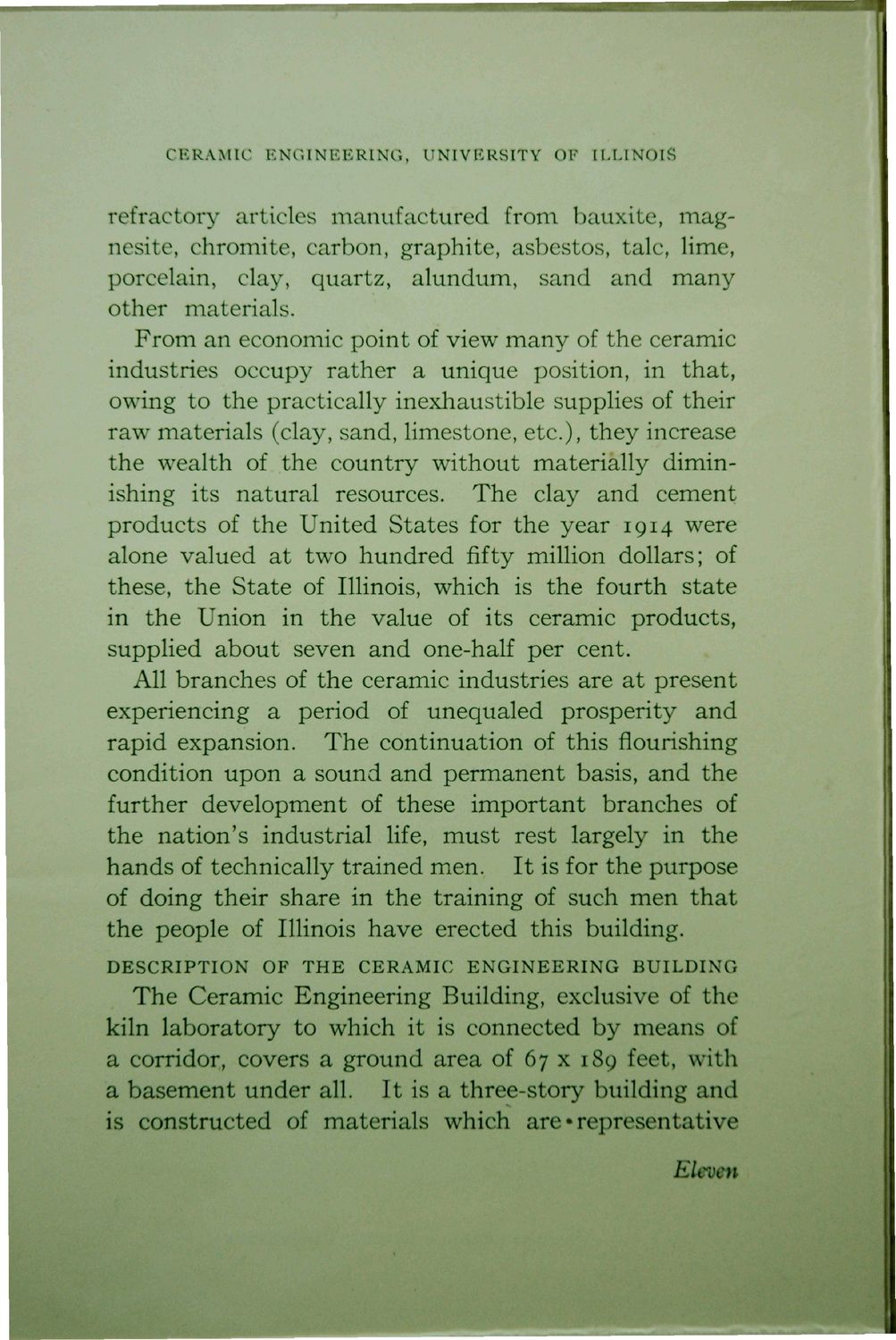| |
| |
Caption: Dedication - Ceramic Engineering Dedication
This is a reduced-resolution page image for fast online browsing.

EXTRACTED TEXT FROM PAGE:
CERAMIC ENGINEERING, UNIVERSITY OP ILLINOIS refractory articles manufactured from bauxite, magnesite, chromite, carbon, graphite, asbestos, talc, lime, porcelain, clay, quartz, alundum, sand and many other materials. From an economic point of view many of the ceramic industries occupy rather a unique position, in that, owing to the practically inexhaustible supplies of their raw materials (clay, sand, limestone, etc.), they increase the wealth of the country without materially diminishing its natural resources. The clay and cement products of the United States for the year 1914 were alone valued at two hundred fifty million dollars; of these, the State of Illinois, which is the fourth state in the Union in the value of its ceramic products, supplied about seven and one-half per cent. All branches of the ceramic industries are at present experiencing a period of unequaled prosperity and rapid expansion. The continuation of this flourishing condition upon a sound and permanent basis, and the further development of these important branches of the nation's industrial life, must rest largely in the hands of technically trained men. It is for the purpose of doing their share in the training of such men that the people of Illinois have erected this building, DESCRIPTION OF THE CERAMIC ENGINEERING BUILDING The Ceramic Engineering Building, exclusive of the kiln laboratory to which it is connected by means of a corridor, covers a ground area of 67 x 189 feet, with a basement under all. It is a three-story building and is constructed of materials which are*representative Eleven
| |